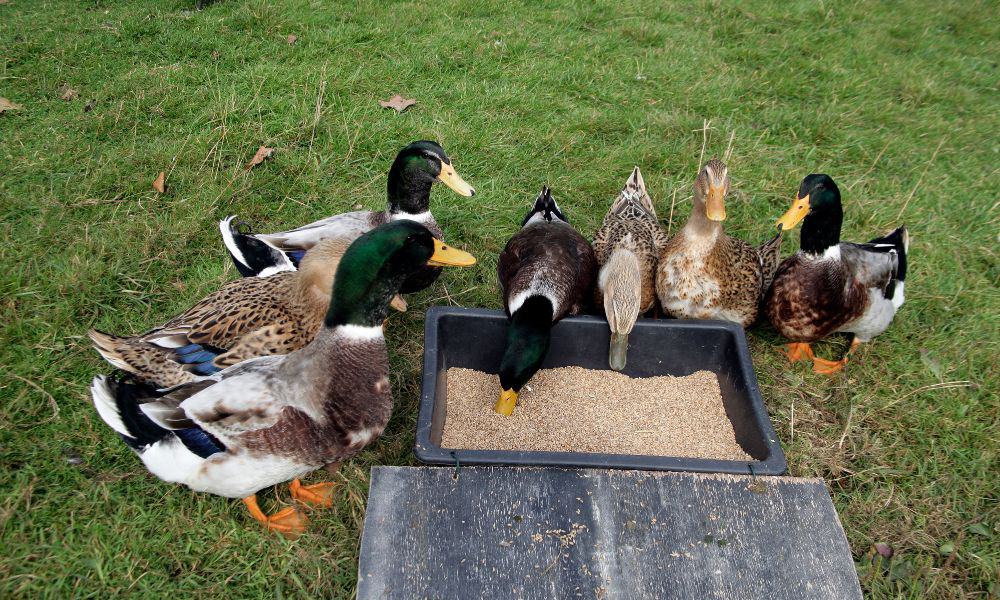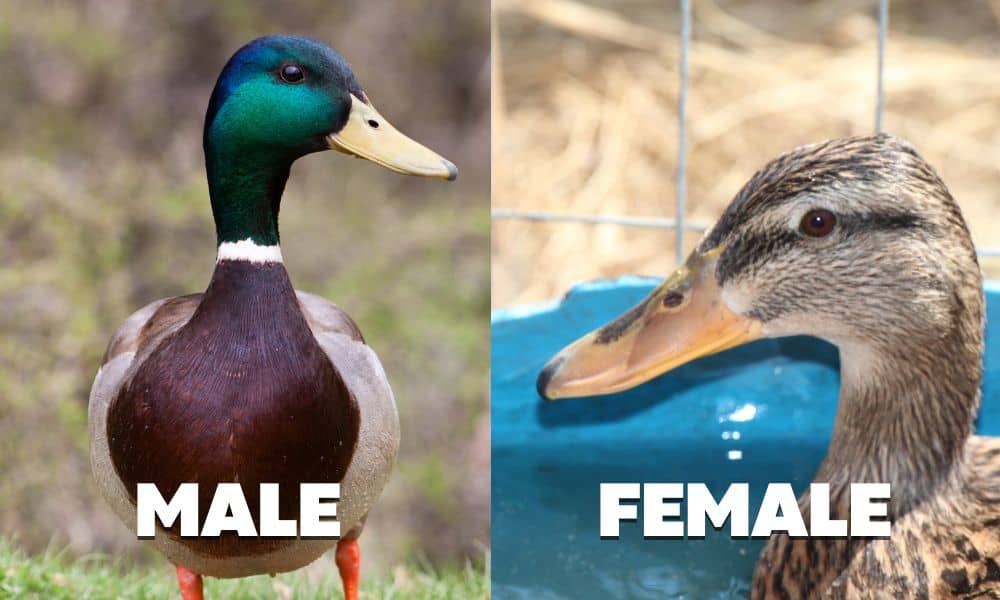Hey look it’s a Rouen duck!
No that’s a Mallard…
No that’s a Rouen…
Yup, at a glance it’s extremely difficult to tell a Rouen duck from a Mallard duck. But, although they do appear very similar they are NOT the same.
Here’s every observable and behavioral difference between Rouen ducks and Mallard ducks – all to help you be the most informed duck enthusiast at the party (if you aren’t already!)
Contents
Rouen Duck Vs. Mallard Duck Summary Table

Rouen Ducks Vs. Mallard Ducks: All Differences

Mallard ducks are the ancestors of almost all domestic duck breeds, including the Rouen. That’s one of the leading reasons why Mallards and Rouens appear so similar in color and plumage!
Still, just as there are similarities, there are differences too!
Origin
The Mallard was originally a wild duck breed that spread all over Asia, Europe, North America, and North Africa. In the 1900s, they were on the verge of extinction. However, people started raising them on their farms and saved the breed. And we’re very thankful that they did!
Roeun ducks originated from France somewhere around the 1800s but were transported across the world and can now be found worldwide, like the Mallards.
Size
From afar, the plumage of an adult Mallard and adult Rouen ducks look practically identical.
But, one physical characteristic which makes it pretty clear that you’re looking at either a Mallard or Rouen is the actual size of the bird.
What I mean here is an adult Mallard duck is visually much, much smaller – weighing only between 1.5 – 4 pounds and standing a good few inches shorter than the Rouen.
On the other hand, the Rouen duck is a pretty large duck breed and can weigh anywhere from 6-8 pounds as an adult. They also appear much longer and taller in general.
Temperament
The temperament of Rouen ducks differs significantly from that of Mallard ducks.
Mallards are known for their evasive nature, which is why they’re hard to domesticate. They also hold a lot of their ‘wild’ characteristics.
Still, with the right infrastructure and human contact Mallards can become just as affectionate and domesticated as any other duck. Even so, it’s clear they prefer the company of other Mallards over human contact.
On the other hand, Rouens are much more calm and docile, some even describe them as Lazy.
Rouens don’t make a lot of noise and they’re slow growers who take their time with everything. That said, male Rouen ducks (drakes) are known to be aggressive at times.
Egg Laying
Of course, the main question on any duck raiser’s mind is: just how many eggs am I going to get!?
Although there are some duck breeds that are known for their brilliant egg-laying (Indian Runner Ducks for example), both Mallard ducks and Rouen ducks are known to be seasonal layers.
You can expect Rouen ducks to lay between 80 – 120 eggs per year, in clutches of 5-10 eggs at a time.
Mallard ducks do lay a touch more eggs, at around 120 – 140 eggs per year, in clutches of 8-12 per clutch at a time.
Both of these duck breeds tend to also lay smaller-sized eggs, but despite this, the eggs themselves are still high-quality and absolutely delicious.
Plumage Colors (& Males Vs. Females)

While Rouens are slightly brighter in color, the plumage of both Rouen and Mallard Ducks are particularly identical.
What you will find, however, is that the males and females of each duck breed look entirely different, and are very distinguishable from one another.
This is because the Rouen and Mallard males have deep green colored heads and the Rouen and Mallard females maintain a consistent light-ish brown color across their entire bodies.
Of course, what this means is both male Rouen and male Mallard ducks look rather identical, and female Rouen and female Mallard ducks look rather identical.
The only observable difference, other than their physical size and posture, is that Rouen females normally have two black stripes on their heads, one above and one below the eye. Mallard females only have one strip over each eye.
Quick Summary
From their temperament to their egg laying, to their physical characteristics, the main key differences between Rouen and Mallard ducks are:
- Mallard ducks are visually smaller than Rouen ducks.
- Mallard ducks are more skittish than the docile Mallard duck
- Mallard ducks lay between 120 – 140 eggs per year, whereas Roeun ducks only lay between 80 – 120 eggs per year.
